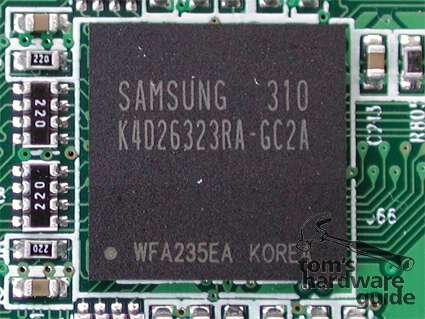Introducing ATi's New Middle Class: The Radeon 9600 PRO
The Radeon 9600 PRO In Summary
Feature-wise, the RV350 is very similar to the R300. The main difference is the new chip's 0.13µ production process, which allows for higher clock frequencies while at the same time lowering production cost. The RV350 also inherited SmoothVision 2.1 with its improved "color compression," as well as "Hyper Z III+" with an optimized Z cache and improved stencil operations from the new R350 (Radeon 9800). The pixel and vertex shader capabilities are identical to those of the R300 generation.
BGA memory with 3.1ns.
The RV 350's memory bus is 128 bits wide, just like the Radeon 9500's. What separates these two chips is the reduction of pixel pipelines from eight to four (compared to the Radeon 9500 PRO), and of the vertex shaders - from four to two. Our benchmark section should be able to tell us to what extent ATi can make up for these disadvantages by increasing the clock speed (400 MHz, up from 275 MHz). Talking about pixel pipelines, we shouldn't forget that numbers aren't everything - these pipes need to be kept "fed." All the pixel pipelines in the world wouldn't do a chip any good if the memory bandwidth was insufficient to keep them supplied with data.
Get Tom's Hardware's best news and in-depth reviews, straight to your inbox.
Current page: The Radeon 9600 PRO In Summary
Prev Page Radeon 9600 PRO, Alias RV350 Next Page Radeon 9600 PRO Card Versions